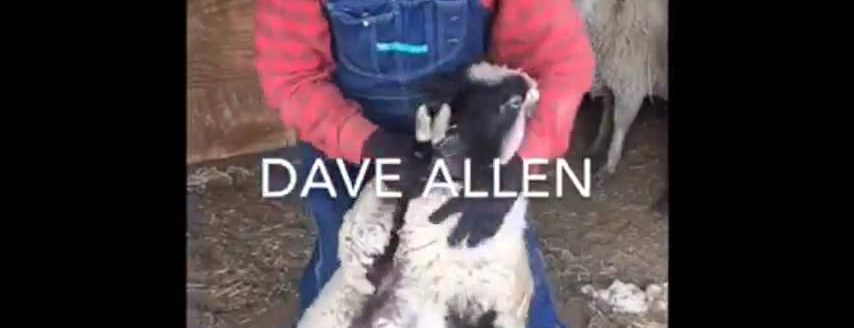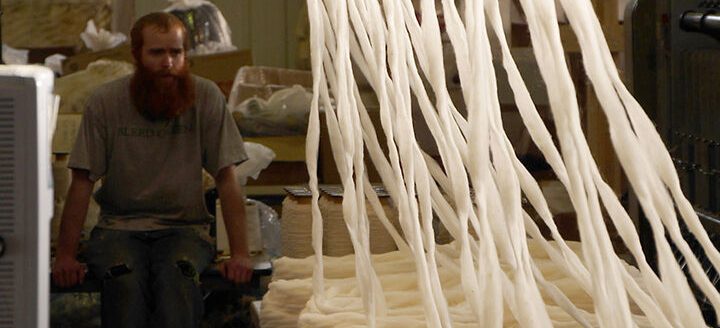Annual University of Wyoming ram tests offer producers firm data

Utah sheep producer Lanny Frampton has definite opinions about data versus word of mouth when he makes production decisions.
He and his wife, Caroline, had driven 420 miles from their Tooele ranch to attend the 56th annual Wyoming ram test field day recently near Laramie.
Producers drop off test rams in October, and University of Wyoming Laramie Research and Extension Center personnel care for and feed the animals for 140 days, measuring wool diameters and rate of gain, among other factors. The data is compiled and producers are invited back to get their results in late March or April. The top 30 percent of performers are eligible to become certified sires.
“Data doesn’t lie,” said Frampton, who has raised sheep for 28 years, and noted his wife’s life-long experience raising sheep, adding she was raised in a sheep camp half the time as a child. Her father was a sheep rancher.
Frampton said he relies on information, not people.
“You can go to a person’s place, and they’ll tell you they have the greatest sheep in the world,” he said. “That’s 90 percent BS. This is data. That’s what I like. I want to know what I got. I want to know what the wool measurement is, the rate of gain. I don’t want to raise anything I don’t want to sell. I want a good product.”
Producer names are listed with their ram test results, so everyone knows how one another’s animals performed.
Jim Forbes of Kaycee has been bringing rams for 40 years and said the information has helped him.
“I can see what I’m gaining, what I’m losing and I can compare my rams to everybody else’s on equal terms,” he said. “They’re here for five months. If my rams need more clean fleece weight, I can look and see what breeder has more fleece weight and talk to him about getting a stud. It’s improved my herd a lot.”
Clyde Peterson of Lance Creek has participated since 1967. He said he’s seen great improvement in Rambouillet sheep.
“As a matter of fact, for people who use the certified rams, I’ve seen their herds really improve,” he said. “The thing is, our sheep are getting more alike because of it. But that’s a good thing as far as I’m concerned.”
Whit Stewart joined the Department of Animal Science last year from Montana State University. The University of Wyoming Extension sheep specialist’s move to Wyoming left a vacuum in Montana’s sheep testing, and the state stopped its ram test.
Texas A&M also recently dropped its test, leaving testing only in Wyoming and North Dakota.
Stewart reminded producers that over 50 years the program has seen Wyoming growth rates double and wool quality increase, as measured in clean fleece weight and fiber micron widths.
“The traits we can measure are highly inheritable, and the improvements made are evidence of that,” he said.
Producers make most of their revenue by selling animals, but money from wool helps cash flows.
Wyoming produced the highest valued wool clip in 2017 ($4.4 million or $2 a pound), according to USDA-National Agricultural Statistics Service Information
Sheep and Goat Report estimates released in January, said Stewart. Utah was second at $4.1 million in total value.
“We are the wine country of sheep country,” he said. “People come from all over the world to buy our wool, and we want to make sure we have programs like ram tests that keep us continually improving our wool clip. (Ram tests) help us keep a finger on the pulse of where we are at.”
The Wyoming tests can’t measure all traits of economic value, he said.
“Twinning rates, milking ability and total pounds of lamb weaned per ewe need to be done through on-farm record keeping such as the National Sheep Improvement Programs,” he said.
Stewart added he’s happy to help producers navigate the numerous selection tools out there.
“I’ve been doing this long enough that selecting for better sheep cannot be a one-size-fits-all approach,” he said. “As long as we’re selecting for more productive sheep, there will be numerous ways to get there.”
Even with emerging technologies, many producers use only certified rams and data from Wyoming tests to make production decisions.
And there’s that Frampton perspective on objectivity.
“We are the objective university folks,” Stewart said. “We can’t fluff the numbers. This is a real hardline comparison to your peers. People like that. People like to see what they have.


